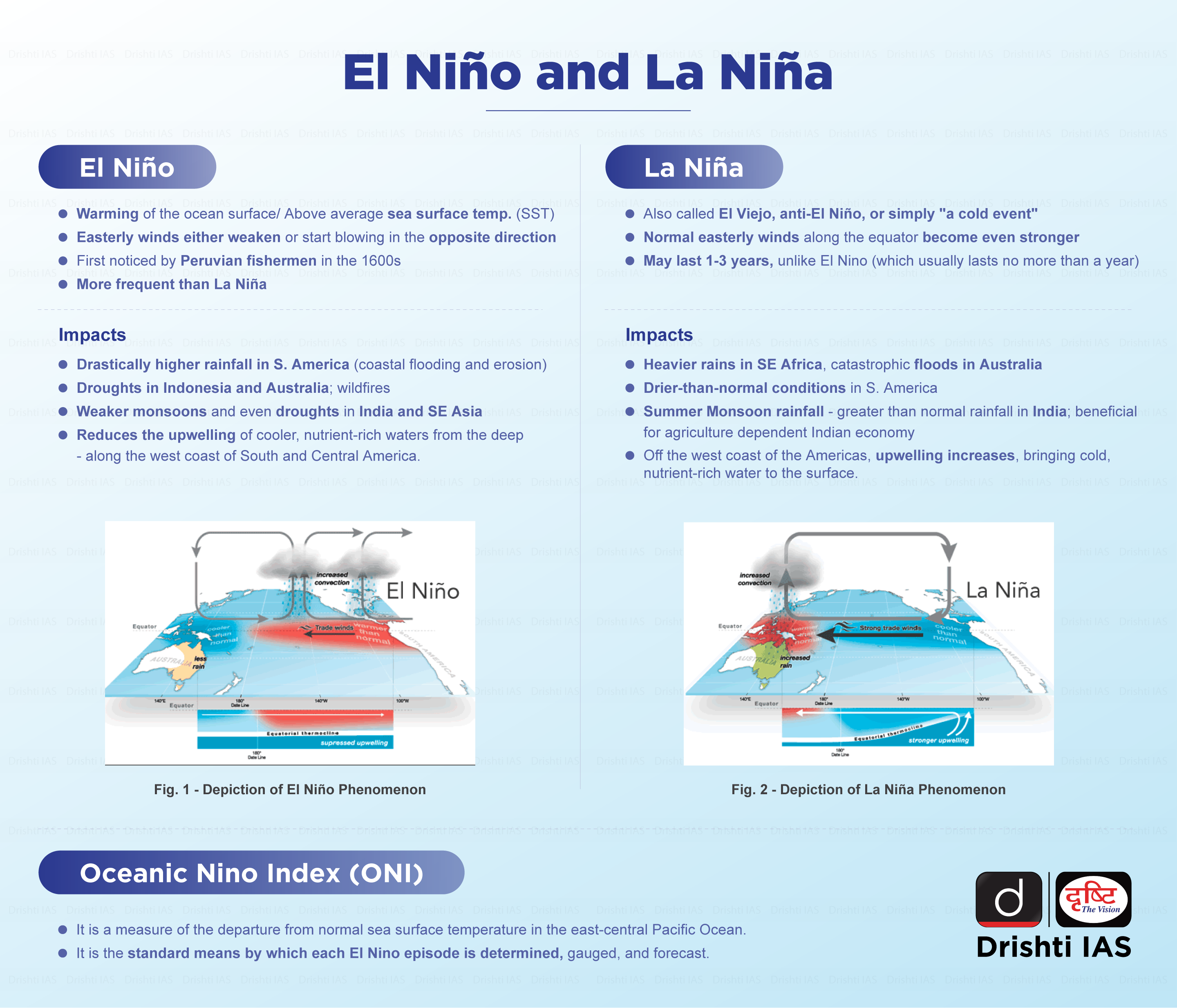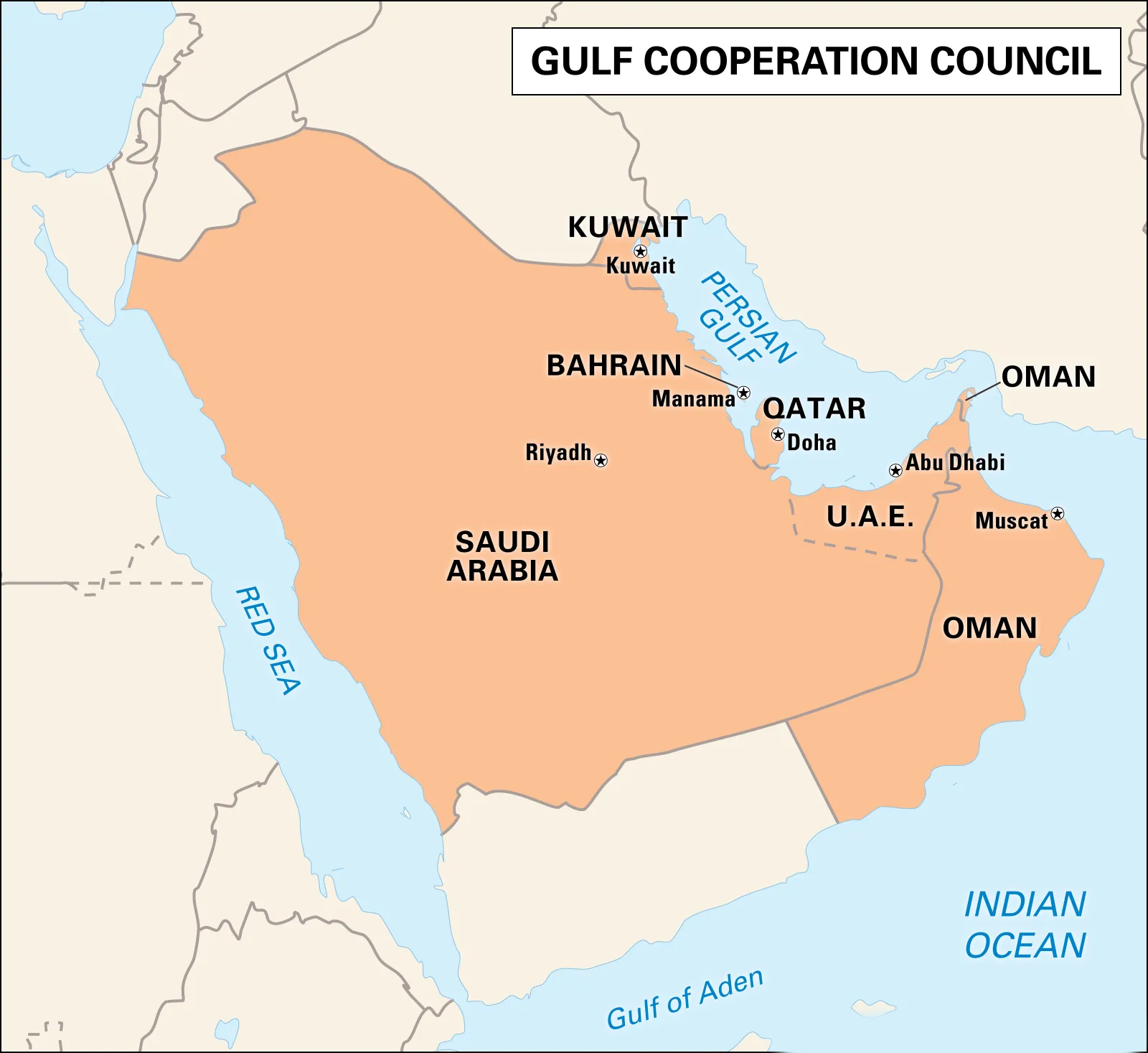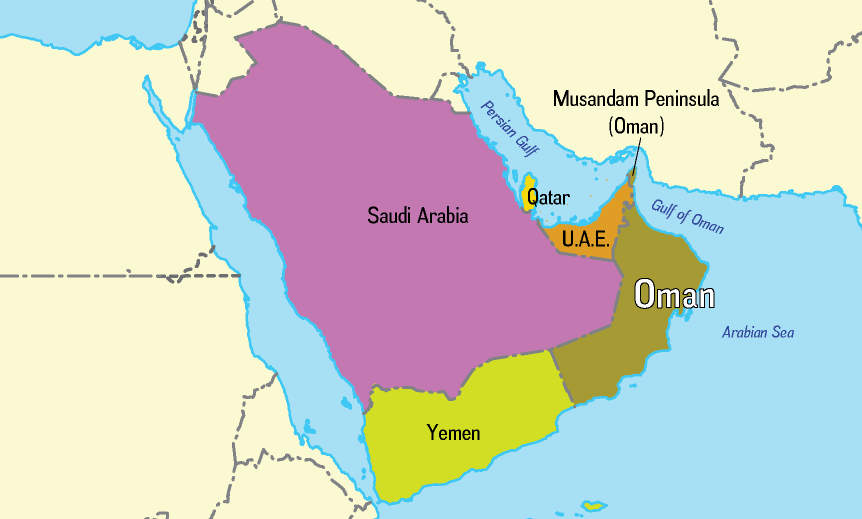Infographics
International Relations
India and Gulf Cooperation Council
For Prelims: Types of Trade Agreements, India & Gulf Countries
For Mains: Significance of Indian-Gulf Relations, Opportunities for India under the Free Trade Agreement (FTA)
Why in News?
India and the Gulf Cooperation Council (GCC) have agreed to pursue a Free Trade Agreement (FTA) between the two regions and resume the negotiations.
- GCC is a union of six countries in the Gulf region — Saudi Arabia, the UAE, Qatar, Kuwait, Oman and Bahrain. The council is the largest trading bloc of India.
Why is the Gulf Region Crucial for India?
- India has enjoyed centuries of good relations with countries like Iran, while smaller gas-rich nation Qatar is one of India’s closest allies in the region.
- India shares good relations with most of the countries in the Gulf.
- The two most important reasons for the relationship are oil and gas, and trade.
- Qatar accounts for 41% of India’s total natural gas imports.
- Two additional reasons are the huge number of Indians who work in the Gulf countries, and the remittance they send back home.
- As per a research paper published by the Reserve Bank of India, in the financial year 2020-21, remittances from the UAE to India were USD15.40 billion, which is 18% of India’s total inward remittances.
What is the State of the India-GCC Trade Relationship?
- India’s exports to the GCC member countries grew by 58.26% to about USD 44 billion in 2021-22 against USD 27.8 billion in 2020-21.
- Bilateral trade in goods has increased to USD 154.73 billion in 2021-22 from USD 87.4 billion in 2020-21.
- Services trade between the two regions was valued at around USD 14 billion in 2021-22, with exports aggregated at USD 5.5 billion and imports at USD 8.3 billion.
- GCC countries contribute almost 35% of India’s oil imports and 70% of its gas imports.
- India’s overall crude oil imports from the GCC in 2021-22 were about USD 48 billion, while LNG and LPG imports in 2021-22 stood at about USD 21 billion.
What is the Status of Indian Trade Agreements with Other Countries?
- India-Australia Trade Agreement:
- Recently, the Australian Parliament approved the India-Australia Economic Cooperation and Trade Agreement (Ind-Aus ECTA).
- It is the first Free Trade Agreement (FTA) that India has signed with a major developed country in over a decade.
- The Agreement encompasses cooperation across the entire gamut of bilateral economic and commercial relations between the two friendly countries.
- India-European Union FTA:
- India and the EU restarted their FTA negotiations in goods and services in early 2021 after a gap of eight years.
- The two regions aim to work out pacts in investments and geographic indications parallel to FTA engagement.
- Round three of India-EU FTA talks will begin later this year at Delhi.
- India-UK FTA:
- Over the next few months, India and the United Kingdom will start talks on a free trade agreement (FTA).
- On the agenda is securing a patent regime against evergreening by pharma companies, seeking easier work visas as well as access to Indian movies in the region under the proposed FTA.
- India-UAE CEPA
- The Comprehensive Economic Partnership Agreement (CEPA) between India and the United Arab Emirates (UAE) came into force from 1st May, 2022
- CEPA provides for an institutional mechanism to encourage and improve trade between the two countries.
- India-Canada CEPA:
- Canada had previously been working to advance negotiations on a Foreign Investment Promotion Protection Agreement (FIPA) and a CEPA.
- In August 2022, India and Canada confirmed that they would hold the fourth round of negotiations to secure an Early Progress Trade Agreement (EPTA), an intermediate step till a Comprehensive Economic Partnership Agreement (CEPA) is reached.
Way Forward
- The Gulf region has historical, political, economic, strategic and cultural significance for India. India-GCC Free Trade Agreement (FTA) can provide a boost to the relations.
- Presently, the GCC region is volatile, thus, India needs to safeguard its large economic, political and demographic stakes in the region.
UPSC Civil Services Examination, Previous Year Question (PYQ)
Q. Which of the following is not a member of ‘Gulf Cooperation Council’? (2016)
(a) Iran
(c) Oman
(b) Saudi Arabia
(d) Kuwait
Ans: (a)
Exp:
- The Gulf Cooperation Council (GCC) is an alliance of 6 countries in the Arabian Peninsula – Bahrain, Kuwait, Oman, Qatar, Saudi Arabia and the United Arab Emirates. Iran is not a member of the GCC.
- It was established in 1981 to promote economic, security, cultural and social cooperation between the members and holds a summit every year to discuss cooperation and regional affairs.
- Hence, option (a) is the correct answer.


Biodiversity & Environment
Cryosphere Loss
For Prelims: Ambition on Melting Ice (AMI) on Sea-level Rise and Mountain Water Resources, Cryosphere, Climate Change, Global Warming, Green House Gas, Thawing of Permafrost.
For Mains: Impact of Cryosphere Loss on Global Climate.
Why in News?
At COP27, a broad coalition of 18 governments joined together to create a new high-level group ‘Ambition on Melting Ice (AMI) on Sea-level Rise and Mountain Water Resources’.
What is AMI Group?
- The “AMI” group aims to ensure impacts of cryosphere loss is understood by political leaders and the public, and not only within mountain and polar regions, but throughout the planet.
- The founding governments of the group include Chile (co-chair), Iceland (co-chair), Peru, Czech Republic, Nepal, Finland, Senegal, Kyrgyz Republic, Samoa, Georgia, Switzerland, New Zealand, Monaco, Vanuatu, Sweden, Tanzania, Liberia, Norway and Mexico.
What is the Declaration of the Group?
- Impact of Climate Change:
- Climate change has already caused dramatic changes in the global cryosphere, Earth’s snow and ice regions.
- Lives and livelihoods are threatened by, and some already lost from, these changes. Indigenous peoples in both the Arctic and mountain regions have been among the earliest affected.
- The IPCC Sixth Assessment Cycle reports, including the Special Report on Ocean and Cryosphere in a Changing Climate, conclude that such changes in the cryosphere will worsen with each additional increment of global warming and greenhouse gas emissions in the atmosphere.
- The consequences will occur both within and far beyond those in polar and mountain regions.
- In polar fisheries, in addition to warming these include rapid acidification of polar oceans, which scientists say will reach a critical threshold at 450ppm – a level we are on track to reach in just 12 years.
- Suggestions:
- Protecting the cryosphere through vigorous climate action is not a matter for mountain and polar nations alone: it is a matter of urgent global concern, because the greatest impacts on human communities lie well outside these regions.
- Rapid decreases in global greenhouse gas emissions, to keep alive the possibility of limiting global warming to 1.5°C, are our best option to limit cryosphere losses and the resulting chain of potential catastrophes.
- The need to make pre-2030 emissions reductions a matter of urgency is an imperative for the benefit of all our societies.
What is the Cryosphere?
- About:
- The cryosphere is the part of the Earth’s climate system that includes solid precipitation, snow, sea ice, lake and river ice, icebergs, glaciers and ice caps, ice sheets, ice shelves, permafrost, and seasonally frozen ground.
- The term “cryosphere” traces its origins to the Greek word ‘kryos’ for frost or ice cold.
- The cryosphere extends globally, existing seasonally or perennially at most latitudes, not just in the Arctic, Antarctic, and mountain regions, and in approximately one hundred countries.
- The largest continental ice sheets are found in Antarctica.
- Approximately 70% of the Earth’s freshwater exists as snow or ice.
- Impacts of Cryosphere on Global Climate:
- Albedo:
- Snow and ice have high albedo. They reflect most of the light without being absorbed and helps in cooling of the earth. Thus, presence or absence of snow and ice affects the heating and cooling of Earth’s surface.
- This influences the entire planet’s energy balance.
- Feedback Loop:
- Melting of ice reduces the reflective surface, and, the ocean and land are darker in color, which absorb more solar radiation, and then release the heat to the atmosphere.
- This causes more warming and so more ice melts. This is known as a feedback loop.
- Permafrost:
- Permafrost is potentially a major source of methane and carbon dioxide.
- The permafrost of the polar region has trapped tons of carbon inside its soil.
- If ‘feedback loop’ aggravates, the carbon is released in form of methane- a powerful greenhouse gas- which causes the global warming.
- Permafrost contains about 1,400 to 1,600 billion tons of carbon.
- In terms of carbon budgets, in the 1.5°C climate warming scenario, the melting of permafrost is estimated to result in a range of 150–200 Gt CO2-eq emissions, while at 2+°C degrees would result in at about 220–300 Gt CO2-eq by 2100, comparable to the total emissions of countries like Canada or the entire EU.
- Melting of Cryosphere:
- Melting of cryosphere affects the volume of water in oceans. Any changes in the water cycle, affects global energy / heat budget, and thereby global climate.
- The emission of GHGs and changes in albedo from a melting Arctic are projected to more than double the Arctic’s contribution to global warming by 2100.
- Melting of cryosphere affects the volume of water in oceans. Any changes in the water cycle, affects global energy / heat budget, and thereby global climate.
- Albedo:
UPSC Civil Services Examination, Previous Year Question (PYQ)
Q. How does the cryosphere affect global climate? (2017)
Q. How do the melting of the Arctic ice and glaciers of the Antarctic differently affect the weather patterns and human activities on the Earth? Explain. (2021)

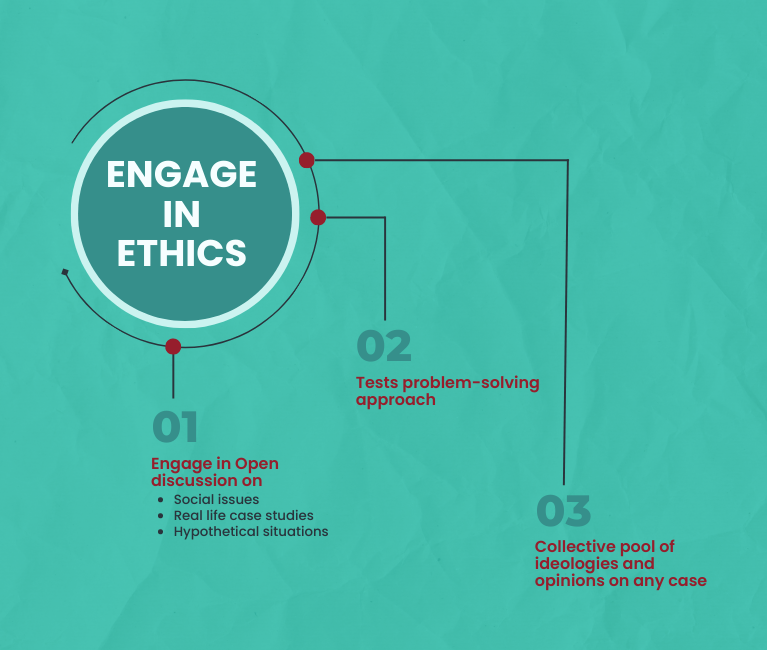
Governance
Pradhan Mantri Fasal Bima Yojana
For Prelims: Pradhan Mantri Fasal Bima Yojana (PMFBY), Zero Premium, Subsidies, Crop Insurance.
For Mains: Pradhan Mantri Fasal Bima Yojana, Government Policies & Interventions
Why in News?
Recently, Union Ministry of Agriculture and Farmers Welfare stated that it is open to taking pro-farmer changes in Pradhan Mantri Fasal Bima Yojana (PMFBY) in response to the recent climate crisis and rapid technological advances.
What is PMFBY?
- About:
- Launched in 2016 and is being administered by the Ministry of Agriculture and Farmers Welfare.
- It replaced the National Agricultural Insurance Scheme (NAIS) and Modified National Agricultural Insurance Scheme (MNAIS).
- Eligibility:
- Farmers including sharecroppers and tenant farmers growing notified crops in the notified areas are eligible for coverage.
- Objectives:
- To provide insurance coverage and financial support to the farmers in the event of failure of any of the notified crops as a result of natural calamities, pests & diseases.
- To stabilize the income of farmers to ensure their continuance in farming.
- To encourage farmers to adopt innovative and modern agricultural practices.
- To ensure the flow of credit to the agriculture sector.
- Premium:
- There will be a uniform premium of only 2% to be paid by farmers for all Kharif crops and 1.5% for all Rabi crops. In the case of annual commercial and horticultural crops, the premium to be paid by farmers will be only 5%.
- Premium over and above these limits is shared by the Central and State Governments on 50:50 basis except in North Eastern Region where it is 90: 10.
- There is no upper limit on Government subsidies. Even if the balance premium is 90%, it will be borne by the Government.
- Earlier, there was a provision of capping the premium rate which resulted in low claims being paid to farmers.
- This capping has now been removed and farmers will get a claim against the full sum insured without any reduction.
- Scope:
- PMFBY is currently the largest crop insurance scheme in the world in terms of farmer enrolments, averaging 5.5 crore applications every year and third largest in terms of premium received.
- During the arduous seasons of 2017, 2018 and 2019 marred by weather extremities, the scheme proved to be a decisive factor in securing livelihoods of farmers wherein claims paid ratio in several states averaged more than 100 % against the gross premium collected.
What are the Recent Changes?
- The scheme was once mandatory for loanee farmers, but 2020, the Centre changed it to make it optional for all farmers.
- The Centre decided in February 2020 to limit its premium subsidy to 30% for unirrigated areas and 25% for irrigated ones (from the existing unlimited). Previously, the central subsidy had no upper limit.
- Recently introduced Weather Information and Network Data Systems (WINDS), Yield Estimation System based on Technology (YES-Tech), Collection of Real Time Observations and Photographs of Crops (CROPIC) are some of the key steps taken under the scheme to bring in more efficiency and transparency.
What were the Issues Related to the Scheme?
- Financial Constraints of States: The financial constraints of the state governments and low claim ratio during normal seasons are the major reasons for non-implementation of the Scheme by these States.
- States are unable to deal with a situation where insurance companies compensate farmers less than the premium, they have collected from them and the Centre.
- The State governments failed to release funds on time leading to delays in releasing insurance compensation.
- This defeats the very purpose of the scheme which is to provide timely financial assistance to the farming community.
- Claim Settlement Issues: Many farmers are dissatisfied with both the level of compensation and delays in settlement.
- The role and power of Insurance companies is significant. In many cases, it didn't investigate losses due to a localized calamity and, therefore, did not pay the claims.
- Implementation Issues: Insurance companies have shown no interest in bidding for clusters that are prone to crop loss.
- Further, it is in the nature of the insurance business for entities to make money when crop failures are low and vice-versa.
Way Forward
- Union of Agri-Tech and rural insurance can be the magic formula for financial inclusion, enabling a trust in the scheme.
- World Economic Forum’s Global Risk Report 2022 categorizes extreme weather risk as the second largest risk over the next 10 years period. Therefore, it becomes imminent to provide a safety net to the farmers to protect their financial position and encourage them to continue farming and ensure food security.
- There is a need for comprehensive rethinking among states and the central governments to further resolve all the pending issues around the scheme so that the farmers could get benefit from this scheme.
- Further, rather than paying subsidies under this scheme, the state government should invest that money in a new insurance model.
UPSC Civil Services Examination, Previous Year Questions (PYQs)
Q. With reference to ‘Pradhan Mantri Fasal Bima Yojana’, consider the following statements: (2016)
- Under this scheme, farmers will have to pay a uniform premium of two percent for any crop they cultivate in any season of the year.
- This scheme covers post-harvest losses arising out of cyclones and unseasonal rains.
Which of the statements given above is/are correct?
(a) 1 only
(b) 2 only
(c) Both 1 and 2
(d) Neither 1 nor 2
Ans: (b)


Indian Economy
Unemployment in India
For Prelims: National Statistical Office, Types of Unemployment, Government’s Initiatives
For Mains: National Statistical Office, Unemployment; it’s Types, Causes and Related Initiatives
Why in News?
Recently, the National Statistical Office (NSO) has released the Periodic Labour Force Survey (PLFS).
- The unemployment rate in urban areas for persons aged above 15 eased to 7.2% in July-September 2022 from 9.8% in July-September 2021.
What are the Key Findings of the PLFS (July-September 2022)?
- Unemployment Ratio:
- The unemployment ratio is defined as the percentage of persons unemployed among the persons in the labour force.
- The unemployment rate was 6.6% for men and 9.4% for women (9.3% and 11.6% in July-September 2021).
- Worker-Population Ratio (WPR):
- The WPR is defined as the percentage of employed persons in the population.
- The WPR in urban areas for persons aged 15 and above stood at 44.5% (42.3% in July-September 2021).
- The WPR among men was 68.6% and 19.7% among women (66.6% and 17.6% in 2021).
- Labour Force Participation Rate (LFPR):
- It is defined as the percentage of persons in the labour force who are working or seeking or available for work in the population, in urban areas for persons aged 15 and above.
- It increased to 47.9% (46.9% in July-September 2021).
- The LFPR among men was 73.4% and 21.7% among women (73.5% and 19.9%, in July-September 2021).
What is the Periodic Labour Force Survey?
- Considering the importance of the availability of labour force data at more frequent time intervals, the National Statistical Office (NSO), Ministry of Statistics & Programme Implementation launched the Periodic Labour Force Survey (PLFS) in April 2017.
- The objective of PLFS is primarily twofold:
- To estimate the key employment and unemployment indicators (viz. Worker Population Ratio, Labour Force Participation Rate, Unemployment Rate) in the short time interval of three months for the urban areas only in the Current Weekly Status (CWS).
- To estimate employment and unemployment indicators in both Usual Status and CWS in both rural and urban areas annually.
What is Unemployment?
- Unemployment occurs when a person who is actively searching for employment is unable to find work.
- Unemployment is often used as a measure of the health of the economy.
- NSO defines employment and unemployment on the following activity statuses of an individual:
- Working (engaged in an economic activity) i.e., 'Employed'.
- Seeking or available for work i.e., 'Unemployed'.
- Neither seeking nor available for work.
- The first two constitute the labour force and unemployment rate is the percent of the labour force that is without work.
- Unemployment rate = (Unemployed Workers / Total labour force) × 100.
What are Different Types of Unemployment?
- Disguised Unemployment:
- It is a phenomenon wherein more people are employed than actually needed.
- It is primarily traced in the agricultural and the unorganised sectors of India.
- Seasonal Unemployment:
- It is an unemployment that occurs during certain seasons of the year.
- Agricultural labourers in India rarely have work throughout the year.
- Structural Unemployment:
- It is a category of unemployment arising from the mismatch between the jobs available in the market and the skills of the available workers in the market.
- Many people in India do not get jobs due to lack of requisite skills and due to poor education level, it becomes difficult to train them.
- Cyclical Unemployment:
- It is a result of the business cycle, where unemployment rises during recessions and declines with economic growth.
- Cyclical unemployment figures in India are negligible. It is a phenomenon that is mostly found in capitalist economies.
- Technological Unemployment:
- It is the loss of jobs due to changes in technology.
- In 2016, World Bank data predicted that the proportion of jobs threatened by automation in India is 69% year-on-year.
- Frictional Unemployment:
- The Frictional Unemployment also called as Search Unemployment, refers to the time lag between the jobs when an individual is searching for a new job or is switching between the jobs.
- In other words, an employee requires time for searching a new job or shifting from the existing to a new job, this inevitable time delay causes frictional unemployment.
- Vulnerable Employment:
- This means, people working informally, without proper job contracts and thus sans any legal protection.
- These persons are deemed ‘unemployed’ since records of their work are never maintained.
- It is one of the main types of unemployment in India.
What are the Major Causes of Unemployment in India?
- Social Factors:
- In India the caste system is prevalent. The work is prohibited for specific castes in some areas.
- In big joint families having big business, many such persons will be available who do not do any work and depend on the joint income of the family.
- Rapid Growth of Population:
- Constant increase in population has been a big problem in India.
- It is one of the main causes of unemployment.
- Constant increase in population has been a big problem in India.
- Dominance of Agriculture:
- Still in India nearly half of the workforce is dependent on Agriculture.
- However, Agriculture is underdeveloped in India.
- Also, it provides seasonal employment.
- Still in India nearly half of the workforce is dependent on Agriculture.
- Fall of Cottage and Small industries:
- The industrial development had adverse effects on cottage and small industries.
- The production of cottage industries began to fall and many artisans became unemployed.
- Immobility of Labour:
- Mobility of labour in India is low. Due to attachment to the family, people do not go to far off areas for jobs.
- Factors like language, religion, and climate are also responsible for low mobility.
- Defects in Education System:
- Jobs in the capitalist world have become highly specialised but India’s education system does not provide the right training and specialisation needed for these jobs.
- Thus, many people who are willing to work become unemployed due to lack of skills.
What are Government’s Initiatives to Curb Unemployment?
- Support for Marginalized Individuals for Livelihood and Enterprise (SMILE)
- PM-DAKSH (Pradhan Mantri Dakshta Aur Kushalta Sampann Hitgrahi)
- Mahatma Gandhi National Rural Employment Guarantee Act (MGNREGA)
- Pradhan Mantri Kaushal Vikas Yojana (PMKVY)
- Start Up India Scheme
- Rozgar Mela
UPSC Civil Services Examination, Previous Year Questions (PYQs)
Q. Disguised unemployment generally means (2013)
(a) large number of people remain unemployed
(b) alternative employment is not available
(c) marginal productivity of labour is zero
(d) productivity of workers is low
Ans: (c)
Exp:
- An economy demonstrates disguised unemployment when productivity is low and too many workers are filling too few jobs.
- Marginal productivity refers to the additional output that is gained by addition of one unit of labour.
- Since, in disguised unemployment, more number of labour than required are already engaged in the work, the marginal productivity of labour is zero.
- Therefore, option (c) is the correct answer.


Important Facts For Prelims
Draft Aircraft Security Rules, 2022
Why in News?
The Ministry of Civil Aviation has notified the Draft Aircraft Security Rules, 2022.
What is the Background?
- The Draft Aircraft Security Rules, 2022 will supersede Aircraft Security Rules, 2011 and were necessary after Parliament passed Aircraft Amendment Act, 2020 in September 2020, giving statutory powers to BCAS along with the Director General of Civil Aviation and Aircraft Accident Investigation Bureau.
- These allow them to impose penalties which could only be imposed by courts earlier. The Act also raised the maximum penalty from RS 10 lakh to Rs 1 crore
- The amendment in Parliament was required after the United Nation’s aviation watchdog, International Civil Aviation Organisation (ICAO), raised questions about the three regulators functioning without statutory powers.
What are the Rules?
- Penalty and Suspension:
- These rules will enable the Bureau of Civil Aviation Security (BCAS) to impose a fine of RS 50 lakh to RS 1 crore (depending on the size of the company) on airports and airlines if they fail to prepare and implement a security programme, or if they commence operations without seeking a security clearance.
- The BCAS is an attached office of the Ministry of Civil Aviation (India). It is the regulatory authority for civil aviation security in India.
- Individuals will also face penalties ranging from RS 1 lakh to Rs 25 lakh depending on the nature of offence.
- The BCAS will also be able to suspend or cancel an entity’s airport security clearance and security programme.
- These rules will enable the Bureau of Civil Aviation Security (BCAS) to impose a fine of RS 50 lakh to RS 1 crore (depending on the size of the company) on airports and airlines if they fail to prepare and implement a security programme, or if they commence operations without seeking a security clearance.
- Cyber Security:
- In order to deal with cyber security threats, the rules also require each entity to protect its information and communication technology systems against unauthorized use and prohibit disclosure of sensitive aviation security information.
- Private Security Agents:
- The draft rules now authorize airports to engage private security agents instead of CISF (Central Industrial Security Force) personnel at “non-core areas” and assign security duties as per the recommendation of the National Civil Aviation Policy, 2016.
What is the International Civil Aviation Organisation?
- ICAO is a United Nations (UN) specialized agency, established in 1944, which laid the foundation for the standards and procedures for peaceful global air navigation.
- The Convention on International Civil Aviation was signed on 7th December 1944 in Chicago.
- It established the core principles permitting international transport by air, and also led to the creation of the ICAO.
- One of the objectives is to foster the planning and development of international air transport so as to ensure the safe and orderly growth of international civil aviation throughout the world.
- India is among its 193 members.
- It is headquartered in Montreal, Canada.


Important Facts For Prelims
Leith’s Soft-shelled Turtle
Why in News?
At its 19th Meeting in Panama, the Conference of Parties to CITES adopted India's proposal to move Leith's Softshell Turtle from Appendix II to Appendix I.
- India’s proposal for inclusion of Jeypore Hill Gecko (Cyrtodactylus jeyporensis) in Appendix II.
What is the Significance of the Listing?
- The CITES Appendix I listing of this Turtle species would ensure that legal international trade in the species does not take place for commercial purposes.
- It would also ensure that international trade in captive-bred specimens only takes place from registered facilities and further that higher and more proportionate penalties are provided for illegal trade of the species.
- The listing of the Leith’s soft-shell turtle, thereby, strengthens its CITES protection status to ensure better survival of the species.
What is Leith’s Soft-shelled Turtle?
- About:
- Leith’s Softshell Turtle (Nilssonia leithii) is a large freshwater soft-shelled turtle which is endemic to peninsular India and it inhabits rivers and reservoirs.
- Threats:
- The species has been subject to intensive exploitation over the past 30 years.
- It has been poached and illegally consumed within India. It has also been illegally traded abroad for meat and for its calipee.
- The population of this turtle species is estimated to have declined by 90% over the past 30 years such that the species is now difficult to find.
- Protection Status:
- The International Union for Conservation of Nature (IUCN) Red List: Critically Endangered
- Wildlife Protection Act (WPA): Schedule IV
- CITES: Appendix I


Important Facts For Prelims
HADR Exercise Samanvay 2022
Why in News?
Indian Air Force (IAF) is conducting the Humanitarian Assistance and Disaster Relief (HADR) Exercise 'Samanvay 2022' from 28th to 30th November 2022 at Air Force Station Agra.
What is Samanvay 2022?
- About:
- It is an annual joint exercise involving various stakeholders from India and representatives from the Association of Southeast Asian Nations (ASEAN) counties.
- Aim:
- It aims to assess the efficacy of institutional disaster management structures and contingency measures.
- The exercise also aims to provide a unique platform for exchange of domain knowledge, experience and best practices with the participating ASEAN member countries.
- Significance:
- Samanvay 2022 will promote a synergistic approach towards HADR by various national and regional stakeholders involved in Disaster Management including the Civil Administration, the Armed Forces, National Disaster Management Authority (NDMA), etc.
- This multi-agency engagement is expected to contribute in the evolution of institutional frameworks for effective communication, interoperability, cooperation and their application for successful conduct of HADR.

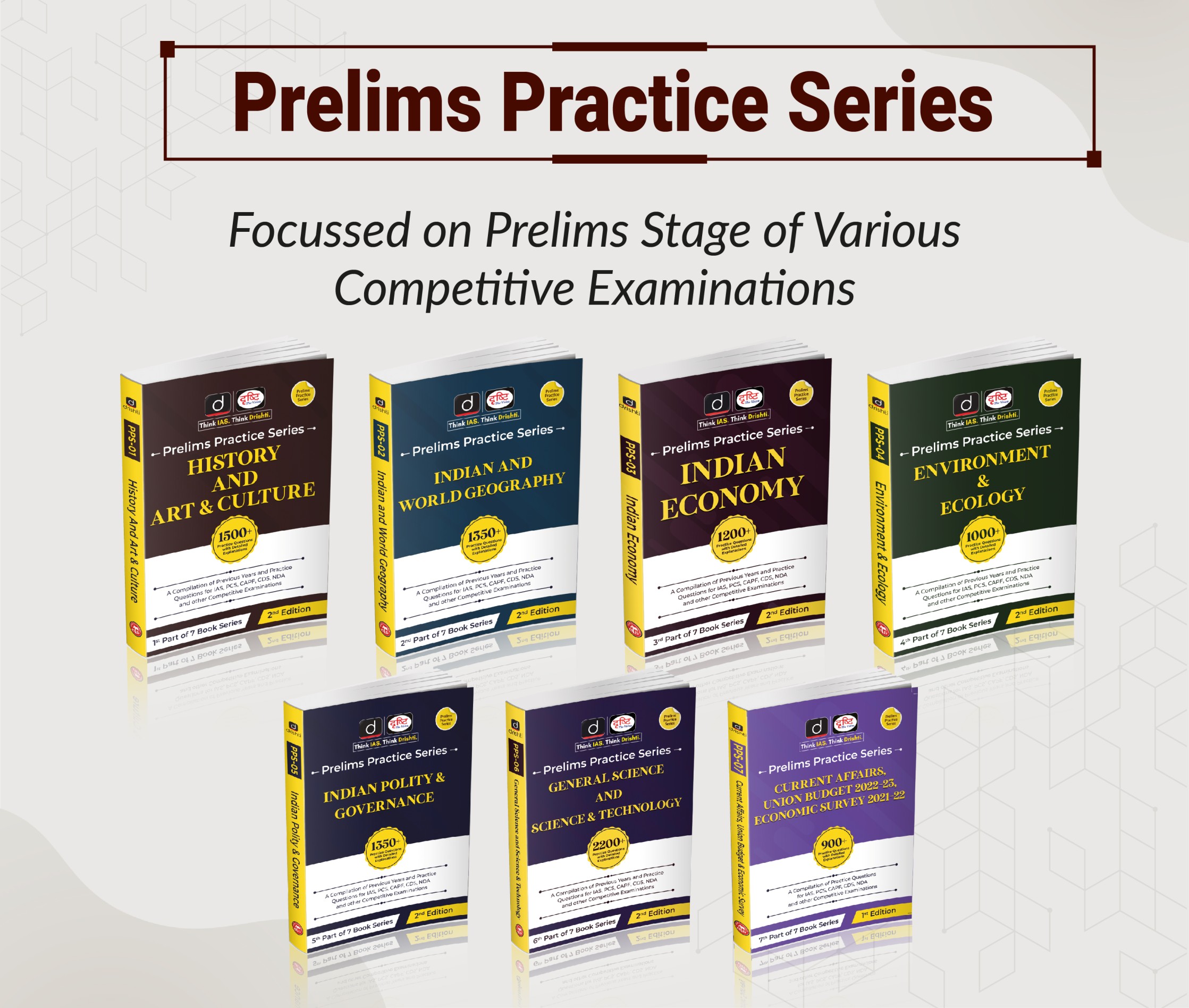
Important Facts For Prelims
Naseem Al Bahr 2022
Why in News?
The Indian Naval Ship (INS) Trikand, INS Sumitra, and Maritime Patrol Aircraft (MPA) Dornier, participated in the 13th Edition of ‘Naseem Al Bahr’ (Sea Breeze).
- INS Trikand is a frontline frigate equipped with a versatile range of weapons and sensors. It is a part of the Indian Navy’s Western Fleet, based at Mumbai.
- INS Sumitra, a multirole offshore patrol vessel is part of the Eastern Fleet of the Indian Navy, based at Visakhapatnam.
What is Naseem Al Bahr?
- About:
- It is a bilateral maritime exercise between Indian Navy (IN) and Royal Navy of Oman (RNO).
- The exercise was conducted from 19th to 24th November 2022 off the coast of Oman and had three phases: harbour phase, sea phase and debrief.
- The first IN-RNO exercise was conducted in 1993.
- Year 2022 marks 30 years of IN-RNO bilateral exercises.
- Significance:
- India and Oman have traditionally enjoyed warm and friendly relations, sharing common cultural values. Naval exercises have added strength and substance to these bilateral ties.
What are India’s other Bilateral Maritime Exercises?
- Thailand: India-Thailand Coordinated Patrol (Indo-Thai CORPAT)
- Indonesia: Samudra Shakti
- Singapore: Singapore-India Maritime Bilateral Exercise (SIMBEX)
- Qatar: Zair-Al-Bahr
- Bangladesh: Bongosagar Exercise
- Sri Lanka: Sri Lanka-India Naval Exercise (SLINEX)
- Japan: Japan Maritime bilateral exercise (JIMEX), Maritime Partnership Exercise (MPX)
- France: VARUNA


Important Facts For Prelims
Shaheedi Divas
Why in News?
Every Year, 24th November, is commemorated as the Shaheedi Divas of Guru Tegh Bahadur, the ninth guru of the Sikhs, who stood up against forcible conversions by the Mughals.
Who was Guru Teg Bahadur?
- Guru Tegh Bahadur was born in Amritsar on 21st April 1621 to Mata Nanki and Guru Hargobind, the sixth Sikh guru, who raised an army against the Mughals and introduced the concept of warrior saints.
- As a boy, Tegh Bahadur was called Tyag Mal because of his ascetic nature.
- Guru Tegh Bahadur was the 9th Sikh Guru, often venerated as the ‘Protector of Humanity’ (Srisht-di-Chadar) by the Sikhs.
- He is known as a great teacher, Guru Tegh Bahadur was also an excellent warrior, thinker, and poet, who wrote detailed descriptions of the nature of God, mind, body, and physical attachments among other things spiritual.
- He was only 13 when he distinguished himself in a battle against a Mughal chieftain.
- His writings are housed in the sacred text, ‘Guru Granth Sahib,’ in the form of 116 poetic hymns.
- He was also an avid traveler and played a key role in setting up preaching centers throughout the Indian subcontinent.
- During one such mission, he founded the town of Chak-Nanki in Punjab, which later became a part of Punjab’s Anandpur Sahib.
- In the year 1675, Guru Tegh Bahadur was executed in Delhi under the orders of the Mughal Emperor Aurangzeb.
Who were the Ten Gurus of Sikh Religion?
| Guru Nanak Dev (1469-1539) |
|
| Guru Angad (1504-1552) |
|
| Guru Amar Das (1479-1574) |
|
| Guru Ram Das (1534-1581) |
|
| Guru Arjun Dev (1563-1606) |
|
| Guru Hargobind (1594-1644) |
|
| Guru HarRai (1630-1661) |
|
| Guru Har Krishan (1656-1664) |
|
| Guru Teg Bahadur (1621-1675) |
|
| Guru Gobind Singh (1666-1708) |
|
UPSC Civil Services Examination, Previous Year Question (PYQ)
Q. Consider the following Bhakti Saints: (2013)
- Dadu Dayal
- Guru Nanak
- Tyagaraja
Who among the above was/were preaching when the Lodi dynasty fell and Babur took over?
(a) 1 and 3
(b) 2 only
(c) 2 and 3
(d) 1 and 2
Ans: (b)
Exp:
- Lodi dynasty was the last ruling family of the Delhi Sultanate. The last ruler of this dynasty was Ibrahim Lodi, who was defeated by Babur in 1526 at the Battle of Panipat. It marked the end of the Lodi dynasty and the rise of the Mughal Empire in India led by Babur.
- Guru Nanak (1469-1539): Guru Nanak was the founder of Sikhism and the first of the ten Sikh Gurus. Hence, 2 is correct.
- Dadu Dayal (1544-1603): Dadu Dayal was a poetsaint from Gujarat, India. He was a religious reformer who preached against formalism and priestcraft. “Dadu” means brother, and “Dayal” means “the compassionate one”. Hence, 1 is not correct.
- Tyagaraja (1767-1847): Tyagaraja was a renowned composer of Carnatic music. He was a prolific musician and highly influential in the development of the classical music tradition. Hence, 3 is not correct.
- Therefore, option (b) is the correct answer.



